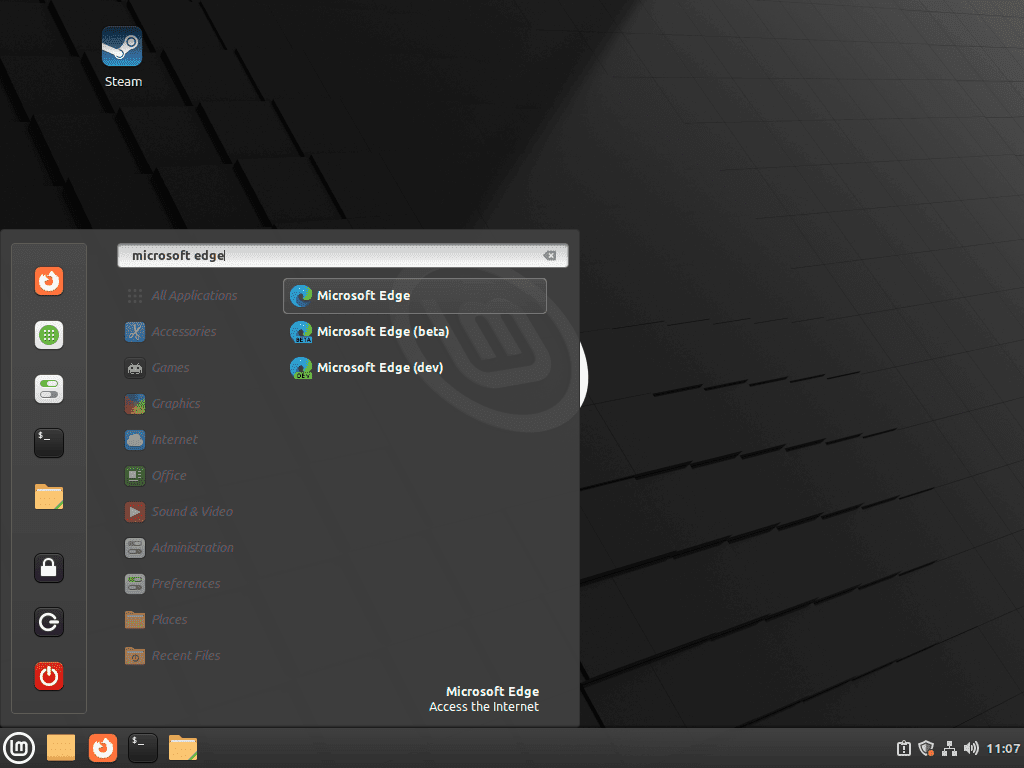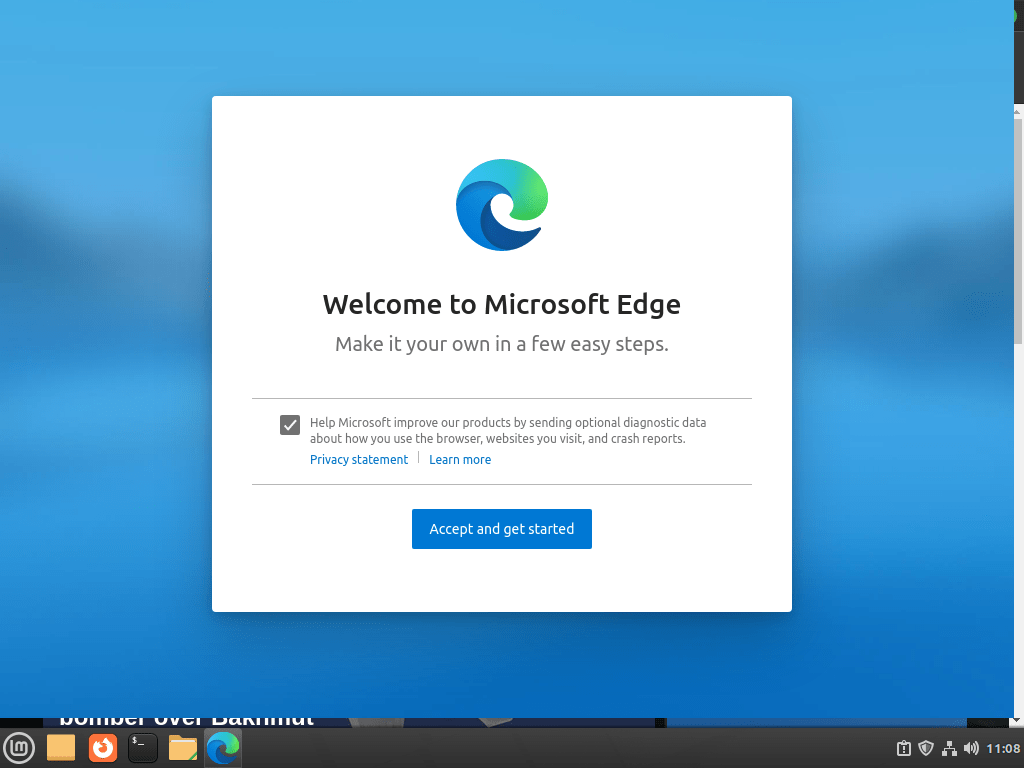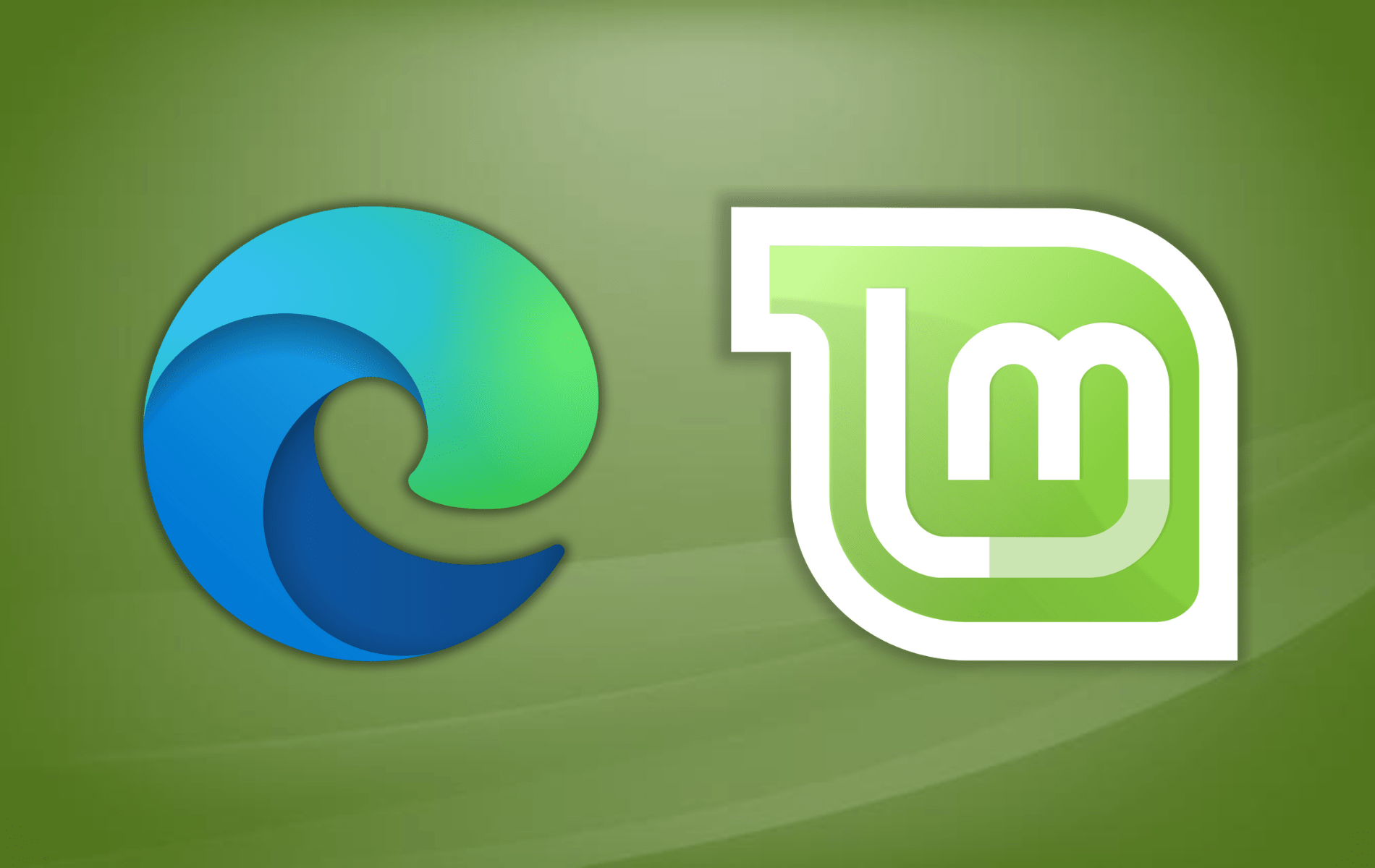Microsoft Edge brings Chromium-based browsing to Linux Mint with seamless Microsoft 365 integration, cross-device sync, and built-in privacy tools. If you need to access SharePoint sites, test web applications across browser channels, or manage Azure AD-authenticated workflows, Edge provides native support that other browsers require extensions to match. By completing this guide, you will have Edge installed through Microsoft’s official APT repository with automatic security updates, DEB822 repository format for cleaner configuration management, and verified installations for Stable, Beta, or Dev channels running side-by-side without conflicts.
This guide covers installing Microsoft Edge on Linux Mint using Microsoft’s official APT repository with modern DEB822 format, launching the browser from terminal or desktop, and managing repository configuration to prevent conflicts when running multiple versions. Testing was conducted on Linux Mint 22 (Ubuntu 24.04 base) with verification across all three release channels.
Linux Mint 22 (based on Ubuntu 24.04) defaults to DEB822
.sourcesformat for APT repository entries. Linux Mint 21.x (based on Ubuntu 22.04) supports.sourcesbut commonly uses legacy.listfiles. This guide uses the modern DEB822 format, which works on both versions and provides better scoped GPG key management.
Update System Packages
Before installing Microsoft Edge, update your system packages to ensure all dependencies are current and compatible. This step reduces the risk of conflicts with outdated libraries or package manager metadata. Additionally, updating now prevents interruptions during the Edge installation process.
Run the following command to refresh package lists and install available updates:
sudo apt update && sudo apt upgradeInstall Required Dependencies
Install the packages needed for secure repository management and package verification. These tools handle GPG key operations (dirmngr), SSL certificate validation (ca-certificates), repository configuration (software-properties-common), HTTPS transport (apt-transport-https), and file downloads (curl). Run this command even if some packages exist—APT skips already-installed packages automatically.
sudo apt install dirmngr ca-certificates software-properties-common apt-transport-https curl -yImport Microsoft Edge GPG Key
The next step involves downloading the GPG key to verify Microsoft Edge package authenticity. This ensures that packages come from Microsoft and have not been tampered with during transmission. Furthermore, the key will be stored in a scoped location for better security isolation.
Download and import the GPG key from Microsoft’s official repository using this command:
curl -fsSL https://packages.microsoft.com/keys/microsoft.asc | gpg --dearmor | sudo tee /usr/share/keyrings/microsoft-edge.gpg > /dev/nullImport the Microsoft Edge APT Repository
With the GPG key successfully imported, you can now add the Microsoft Edge repository to your system using the modern DEB822 format. This configuration lets you install and update the browser directly from Microsoft’s official package repository with scoped GPG key verification. Moreover, the DEB822 format provides cleaner syntax, better multi-architecture support, and easier repository management compared to legacy formats.
Run the following heredoc command to create a multi-line repository configuration file. This command writes the DEB822-formatted configuration directly to the appropriate location, where APT will automatically detect and use it:
cat <<EOF | sudo tee /etc/apt/sources.list.d/microsoft-edge.sources
Types: deb
URIs: https://packages.microsoft.com/repos/edge
Suites: stable
Components: main
Architectures: amd64
Signed-By: /usr/share/keyrings/microsoft-edge.gpg
EOFAfter creating the repository file, verify it was written correctly by displaying its contents:
cat /etc/apt/sources.list.d/microsoft-edge.sourcesThe output should display the complete DEB822-formatted configuration in your terminal. This confirms the file contains all required repository details and is ready for APT to process.
Install Microsoft Edge Browser
Now that the repository is configured, refresh your package cache to fetch the Microsoft Edge package lists:
sudo apt updateThe output confirms APT successfully retrieved package lists from the Microsoft repository:
Get:1 https://packages.microsoft.com/repos/edge stable InRelease [2,755 B] Get:2 https://packages.microsoft.com/repos/edge stable/main amd64 Packages [8,192 B]
Choose Your Microsoft Edge Version
Microsoft Edge offers three release channels that install side-by-side without conflicts. Each uses a separate binary and configuration directory, so you can run Stable, Beta, and Dev simultaneously for testing workflows. The Stable channel delivers production-ready releases tested for reliability, while Beta provides early access to upcoming features with weekly updates. Meanwhile, the Dev channel ships daily builds for testing cutting-edge Chromium changes before they reach wider audiences.
For production environments and daily browsing, choose the Stable channel. However, if you test web applications across browser versions, install Beta or Dev alongside Stable to catch compatibility issues early. Additionally, developers working on Chromium-based extensions benefit from Dev channel testing to verify functionality against upstream changes.
Stable Version of Microsoft Edge
To install the stable version of Microsoft Edge, run the following command:
sudo apt install microsoft-edge-stableVerify the installation:
microsoft-edge --versionMicrosoft Edge 131.x.x
Beta Version of Microsoft Edge
If you want to install the beta version of Microsoft Edge, which offers early access to new features and improvements, use the following command:
sudo apt install microsoft-edge-betaVerify the installation:
microsoft-edge-beta --versionMicrosoft Edge 132.x.x beta
Dev Version of Microsoft Edge
For developers or advanced users seeking to install the latest, frequently updated but potentially less stable dev release of Microsoft Edge, execute the following command:
sudo apt install microsoft-edge-devVerify the installation:
microsoft-edge-dev --versionMicrosoft Edge 133.x.x dev
Launch Microsoft Edge Browser
After successfully installing your preferred version of Microsoft Edge, you can launch the browser using either the terminal or the desktop applications menu. Each method suits different workflows, so choose the approach that matches your preference.
Launch Microsoft Edge from Terminal
For quick access or scripting purposes, you can start Microsoft Edge directly from the terminal. Depending on which version you installed, use the corresponding command below:
microsoft-edgemicrosoft-edge-betamicrosoft-edge-devLaunch Microsoft Edge from Applications Menu
For everyday use, launching Edge from the desktop applications menu is more convenient. Access Microsoft Edge through the Linux Mint menu:
- Navigate to the Taskbar.
- Click on the “Internet” category.
- Locate the “Edge {version}” option, where “{version}” corresponds to the installed version of Microsoft Edge (stable, beta, or dev).
- Click on the appropriate option to launch the browser.


Manage Microsoft Edge Browser
Update Microsoft Edge
Microsoft Edge updates arrive through your regular system update workflow. Consequently, you can use standard APT commands to check for and install browser updates alongside other system packages.
First, refresh your package list to fetch the latest available versions:
sudo apt updateIf updates are available for Microsoft Edge, APT displays them in the upgrade list. Next, proceed with installing available updates:
sudo apt upgradeWhen Edge updates are available, you will see output similar to this:
The following packages will be upgraded: microsoft-edge-stable 1 upgraded, 0 newly installed, 0 to remove and 0 not upgraded.
Remove Microsoft Edge
If you need to remove Microsoft Edge from your Linux Mint system, follow these steps based on your installed version. However, note that uninstalling the browser does not automatically back up your data.
Removing Microsoft Edge deletes the browser but preserves your profile data in
~/.config/microsoft-edge/by default. Therefore, your bookmarks, passwords, and settings remain intact for reinstallation. Nevertheless, if you want to completely remove all browser data, manually delete the~/.config/microsoft-edge/and~/.cache/microsoft-edge/directories after uninstalling. Additionally, synced data remains in your Microsoft account even after local removal.
APT Method to Remove Microsoft Edge
To uninstall Microsoft Edge, run the command that matches your installed version:
sudo apt remove microsoft-edge-stablesudo apt remove microsoft-edge-betasudo apt remove microsoft-edge-devAfter uninstalling the browser, you can optionally remove the repository and GPG key to clean up your system completely. First, delete the repository configuration file:
sudo rm /etc/apt/sources.list.d/microsoft-edge.sourcesThen, remove the GPG key from your keyrings directory:
sudo rm /usr/share/keyrings/microsoft-edge.gpgFinally, refresh your package cache to clear any references to the removed repository:
sudo apt updateTroubleshooting Common Issues
While Microsoft Edge installation typically proceeds smoothly, you may occasionally encounter repository or GPG key issues. The following troubleshooting steps address the most common problems and provide verification commands to confirm fixes.
Repository Not Found After Installation
If you encounter repository errors when running apt update or attempting to install Edge, first verify the repository file exists and contains valid configuration:
cat /etc/apt/sources.list.d/microsoft-edge.sourcesThe output should display the DEB822 format configuration:
Types: deb URIs: https://packages.microsoft.com/repos/edge Suites: stable Components: main Architectures: amd64 Signed-By: /usr/share/keyrings/microsoft-edge.gpg
If the file is missing or corrupted, recreate it using the repository import command from the installation section. Subsequently, run sudo apt update to verify the fix.
Microsoft Edge Packages Not Available
If APT cannot find Microsoft Edge packages during installation, first verify the repository file exists and contains valid configuration:
cat /etc/apt/sources.list.d/microsoft-edge.sourcesIf the file is missing or shows unexpected content, recreate it using the repository import command from the installation section. Then, refresh your package cache:
sudo apt updateSearch for available Edge packages to confirm the repository is working:
apt-cache search microsoft-edgeThe output should list the available packages:
microsoft-edge-beta - The web browser from Microsoft microsoft-edge-dev - The web browser from Microsoft microsoft-edge-stable - The web browser from Microsoft
If packages appear in the search results, the repository configuration is correct and packages are accessible.
GPG Key Verification Failures
When APT reports GPG signature verification errors during package installation or updates, the GPG key file may be missing or corrupted. First, verify the key file exists with correct permissions:
ls -lh /usr/share/keyrings/microsoft-edge.gpg-rw-r--r-- 1 root root 983 Nov 28 10:30 /usr/share/keyrings/microsoft-edge.gpg
If the key is missing, reimport it using the GPG key import command from the installation section.
Duplicate Repository Configuration Warnings
Microsoft Edge installers may automatically create legacy .list files in /etc/apt/sources.list.d/ even though you configured the modern .sources format. When both formats exist simultaneously, APT displays warnings about the repository being configured multiple times. First, check for duplicate warnings by running an update:
sudo apt updateIf you see warnings similar to this output, continue with the cleanup steps below:
W: https://packages.microsoft.com/repos/edge InRelease: The repository is configured multiple times in /etc/apt/sources.list.d/microsoft-edge.list and /etc/apt/sources.list.d/microsoft-edge.sources
Remove the legacy .list files that conflict with your DEB822 configuration:
sudo rm /etc/apt/sources.list.d/microsoft-edge*.listBecause Edge installers can recreate these files during updates, replace them with read-only placeholders to prevent future conflicts. The following commands create empty files that APT ignores but prevent installers from writing new configuration:
sudo touch /etc/apt/sources.list.d/microsoft-edge.list
sudo chmod 444 /etc/apt/sources.list.d/microsoft-edge.listApply the placeholder technique only to redundant Edge
.listfiles. Keep yourmicrosoft-edge.sourcesfile intact so updates continue flowing from Microsoft’s repository. If you installed multiple channels (stable, beta, dev), repeat the placeholder steps for each corresponding.listfile that appeared.
Verify the repository configuration is now clean by updating your package cache again:
sudo apt updateThe duplicate repository warnings should no longer appear in the output, confirming APT now uses only the DEB822 .sources configuration.
Conclusion
You now have Microsoft Edge running on Linux Mint with automatic updates through the official APT repository, DEB822-format configuration for cleaner key management, and verified channel installations. As a next step, consider signing into your Microsoft account for cross-device sync and configuring privacy settings at edge://settings/privacy. Additionally, you may want to compare Edge with Google Chrome on Linux Mint and Tor Browser on Linux Mint for privacy-focused browsing workflows.



Thks for the very helpful, since clear and concise helpfile!
Thks for the very helpful, since clear and concise helpfile!